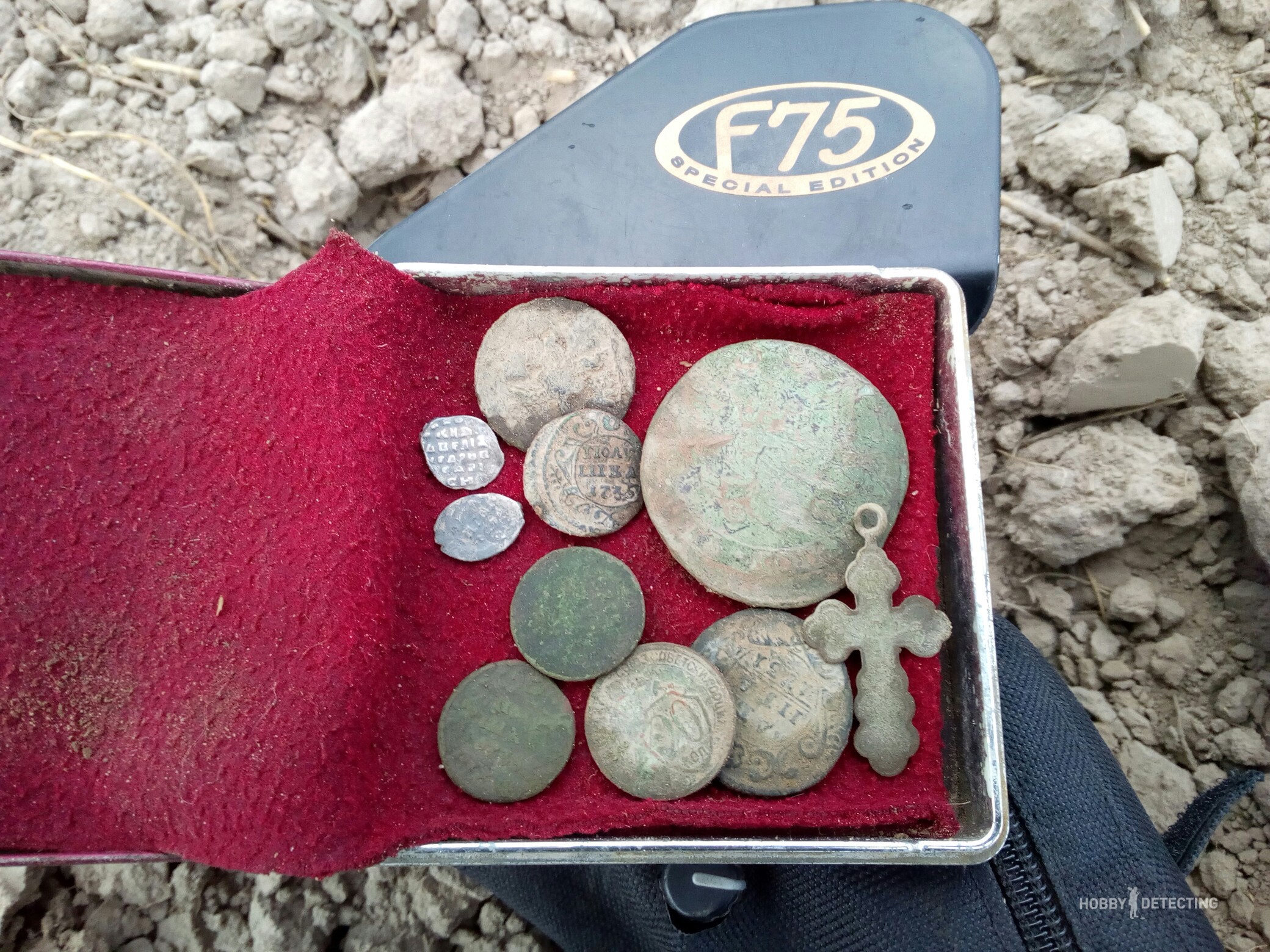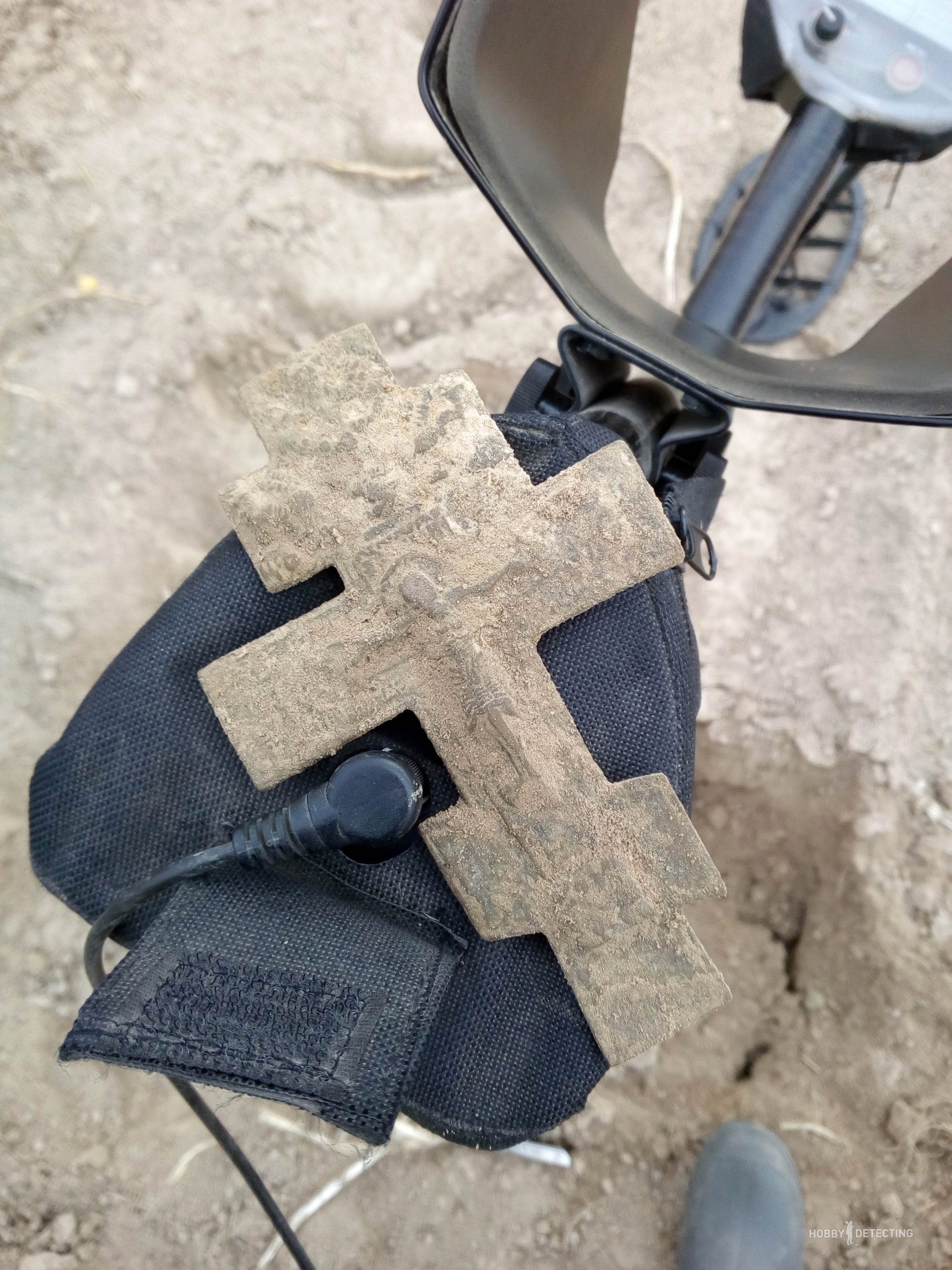Fisher F75 SE Black review and detailed analysis based on personal experience
Over what period of time can one understand a particular metal detector? How many actual digging trips do you need to make in different locations and types of instrument searches in order to learn all the capabilities of the new device? How does knowledge of operating a previous model help in understanding the operating principles of a more advanced and complex MD in the line? It took me a lot of time to answer this question myself. I think that over the past season, on average, I spent at least three hundred hours in fields and forests, along beaches and tracts, in meadows and pits with the Fisher F75 SE Black. And I want to summarize the real experience of “communication” with this metal detector and provide it as a detailed report.
In one of my previous posts on this site, I wrote about the hero’s journey. When a lover of instrumental search is simply obliged to go through all the stages of understanding and understanding the MD of a certain brand, from simple to complex. This happened to me this year. I began my experience in instrument search with the development and MD of the Fisher F70, then a year later I had the opportunity to dig for more than a month with the Fisher F75 (standard package) and in the winter of last year, I had the opportunity to thoroughly test the top of the technical evolutionary chain of the Fisher Research Labs company, the Fisher metal detector F75 SE Black. I will try to immediately explain the situation. I am not a top blogger, and manufacturing companies do not send me metal detectors through the information cooperation program. When I wrote “I received,” it means that I was somehow talking with my friend about this and that, and then it turned out that he had an MD lying idle in his garage for about six years. All my friend remembered was that it was Fischer and that he had a black barbell. He bought this device six years ago during a business trip to Germany, brought it to the dacha, went out a couple of times, wandered through the meadows and checked his garden, the hobby didn’t really go well, and therefore the device took its place in the garage of the country house between old tires and unspent lumber . To my not entirely confident question, “Can you give me this metal detector to test, I’ve been dreaming about this for a long time?” The friend surprisingly easily agreed. So there was only one problem left in this whole matter. This is to wait for spring. 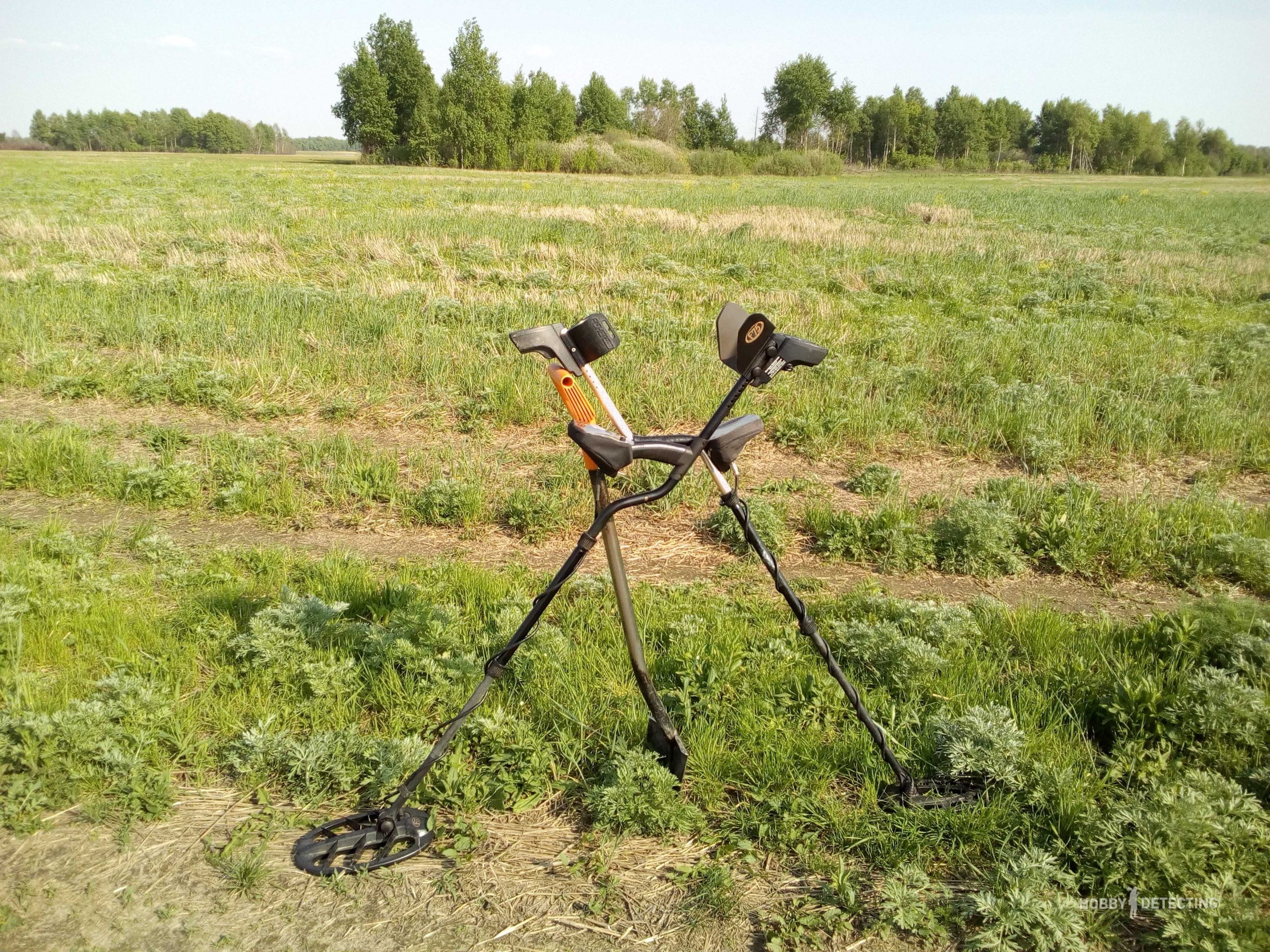
Location No. 1. Spring, MEADOW, fallen grass.
The earliest snow melts in our area is in the meadows. First, bald spots, then large areas, and eventually huge spaces open up, through which you can easily and interestingly wander with a metal detector. As soon as the first areas opened up where I could wander around in search of interesting antique objects, I took Black and installed the well-proven Nel Tornado reel on it. And here we should note another pleasant bonus when using MD of one basic line. The coils I purchased earlier are absolutely applicable to both the F-75, F-70 and, of course, the F75 Black. Therefore, another interesting nuance of my experience was the opportunity to test a new device with all the coils available at that time. And in the set, together with the sniper rifle that comes with the Black kit, there were 5 of them.
What were my hopes and expectations for Black's terrain search capabilities? Well, of course, I expected and believed in a real miracle. After all, at that time I knew well the capabilities of my F-70 MD, two years of experience. It should be noted right away that the third year of experience with the F-70 showed that at that time I understood my device and its real capabilities, God willing, by half. But that's another story, but for now? In the meantime, I really expected that as soon as I came out, I would start digging for signals, that not a step was a signal, coins, crosses, scales. Why not? After all, just four years ago, Fisher F70 cost 20 thousand rubles, and Fisher F75 SE Black cost 70 thousand rubles. And here in the log it is reasonable to expect that a device costing two and a half times more expensive will search for and find at least twice as many finds according to the average statistical indicator. And the one who considers such a desire not normal will throw a stone at me. 
So what? I go out into the meadow, turn on the device, and within ten minutes I begin to realize that I don’t understand it. It makes noise, squeaks, phantoms. Discovery number one is that Black is very sensitive to mobile phone radiation; its predecessors did not show such sensitivity to GSM radiation. For me personally, this is important, my main income is freelancing, and therefore, when I often leave for a cop, I wait for important calls or emails. Well, what can you do? Coping, like art, requires sacrifices, and that’s why I put the airplane in the phone settings and continue to dig.
The expected miracle did not happen. Although there was euphoria from the first two signals. The device sees really large targets at a depth that was inaccessible with previous models. Minié bullets are easily detected at a depth of slightly more than a fiskar bayonet. Please note that this is not a plowed field, this is a meadow with high mineralization and soil density. However, as practice has shown, the average increase in sensitivity in depth of detection of finds did not exceed 10-15 from the indicators that the F-70 gave at the same place. From here I made a rule for myself. The cost of a metal detector has no proportion to the depth of target detection. Separately, please note this fact. At the start of sales of the F-70 line, as I mentioned above, the price was 20 thousand rubles. and Black 75 t.r. What now after 6 years? F-70 costs 31 thousand rubles. and Black 45 tr. What thoughts can this information lead to inference? Perhaps, well, I assume that manufacturers of professional MDs deliberately increase the price, including for marketing purposes. But this is just a thought; perhaps the drop in prices for basic Fisher models is associated with some other factors.
Basically, after digging for a week in that very test meadow, and having received my first experience, I went to test the device at my second favorite spring location.
Location No. 2. Spring, FIELD, lying grass.
A field on the edge of a residential village, once there was a road there, there was active agricultural activity, as a result of the digging we were able to find two separate forges, and in addition to the forges, there are a dozen single-yard villages scattered across the field. Finds from Ivan the Terrible to Stalin. It was interesting to knock out single-yard species, on average per one find point of strictly one time period. With a time interval of 40-60 years. Huge open spaces, bounded on three sides by forest and on the fourth side by village gardens. I have been actively dripping this field for two springs in a row, and now the third season has come. I took a thorough approach to testing the device in this field. I have outlined for myself at least ten trips in the following format. Day (5-6 hours) I dig with Black the next day with F-70. I photograph all finds, and also keep records of garbage.
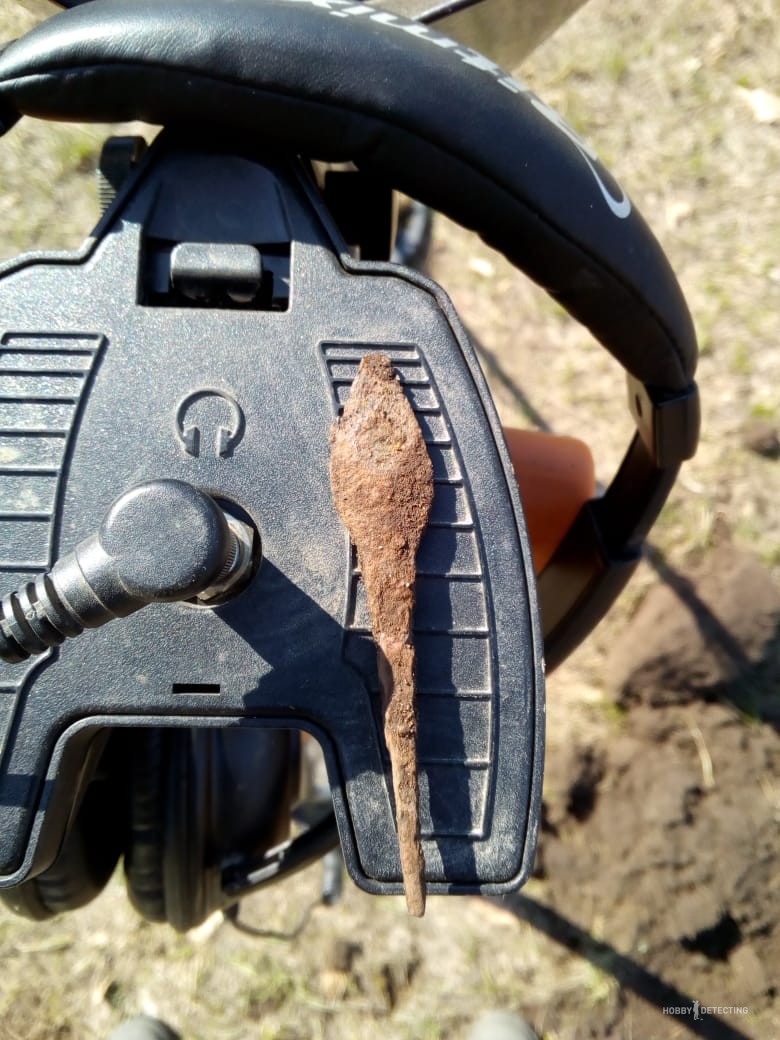
And already on the third trip I began to be overcome by doubt. Black actually, and without adjustments for randomness, lost to the F-70 in terms of the number of finds by a factor of two. Please understand that I was not stupid with the device in the same mode or with the same settings. I constantly experimented, read the instructions and re-read them again, watched advice from top bloggers on YouTube and, taking into account the knowledge I gained, went out into the field. However, the result was still the same. Black actually, and without adjustments for randomness, lost to the F-70 in terms of the number of finds by a factor of two. As a result, 4 trips with Black and three trips with F-70. See the photo in the attachment. I think it is difficult to give a more clear example.
However. And here I need to talk about an experience that I didn’t have before. Namely, combing out and methodically knocking out a previously explored village. As I wrote above, in this field in the first season I explored several separate one-yard locations. In one place we even had to dig a hole; there was a very good deep signal, and as a result, at a depth of a meter, I dug up a hoop from a barrel. Oh, what emotions there were!!! So, almost despairing and disappointed in the F75 Black, and having actually closed this field for myself until the next season, I, unknown to myself, decided to comb through one tubercle. And on this day my surprise knew no bounds. Because the knocked out, re-knocked out, tightly dug up place gave very interesting results. I knocked out this place, with a standard coil setting the maximum sensitivity thresholds in the Boost Process (BP) mode. It should be noted that I was digging for all the signals in that place, this is not a rewarding task and for this you need to have a certain degree of persistence, but there was a result, and from that the experience could be considered positive.
As a result of testing in this location, I came to the understanding that the Fisher F75 SE Black is not intended for digging in large open spaces. The device loves slow wiring and does not work well with large coils. After installing Nel Tornado, the metal detector stopped ground balancing. In general, there was a general slowdown in response speed due to the more powerful processor. In general, it is best to use this device with a standard 11-inch coil.
Location No. 3. Spring, natural boundary, fallen grass.
One of the brightest and most rewarding moments of the 2019 season for me was the discovery of an unbroken village from the Time of Troubles. Actually, I was looking for the location of an extinct village from the period of Catherine the Great, but absolutely by accident I came across the place where the village stood from the time of Ivan the Terrible to Alexei Romanov. The place was explored with an F-70 and for the first three days I dug this place exclusively with the 70th Fisher, tested and studied over the previous two seasons. But still, the hope that I would be able to understand and master Black remained somewhere in the depths of my soul, so for the fourth outing I decided to take Black, in a variation with two coils. Moreover, as previous experience has shown. The device is especially good for slow wiring through explored areas. And then something incomprehensible happened. 
As soon as I went out onto the tract and turned on the MD. The device began to produce incredible trills of phantom signals. Decreasing sensitivity didn't help. I checked the mobile phone, it was turned off, the wire was securely attached to the connecting plug. The nearest power line was 15 kilometers from this site. It’s hard to imagine any underground communications here, even with my imagination. However, the device was phantomized and was useless in almost all modes. The first thought is, well, the reel got wet. I have read this topic many times on blogs and heard it on YouTube. It seems like the early Fisher models, the coil is very poorly sealed with sealants. Because of this, at high humidity the coil begins to malfunction and phantom. Well, okay, maybe so. I give them to the Tornado backpack, change them, turn them on, and the device continues to phantom in the same way. What is this? I leave the village for the forest, turn on the device and everything is fine. I go back to the site of this village from the 20th century, walk around the vegetable gardens, everything is fine. I returned to the medieval village, turned on the device, and there was terrible interference. Well what can I say? I gave this device one more minus, although deep down I still understood and assumed that perhaps I didn’t understand something.
And indeed, as I assumed, the device was phantomized due to the ground, and the fact is that the ancient settlement was built on a dried-out swamp. And the swamps in our area contain a large amount of swamp ore. But as soon as I turned on and configured the JE mode on my next visit, the metal detector began to behave quite stably, and I even managed to effectively walk through places where green grass had not yet come out.
Location No. 4. Summer, a plowed Soviet village.
A resettled village in the 60s under the program of liquidation of unpromising villages is where the real testing ground for your MD is. Everything that was before: fields, meadows, arable land, beaches, all this is just a children's sandbox compared to what you can expect when plowing a Soviet village. A huge number of garbage signals, among which it is necessary and possible to find very interesting finds. And here the Fisher F75 SE Black showed all the advantages of which it was only capable. In general, heavily littered areas where buildings used to stand, abandoned villages or vegetable gardens in existing settlements are the natural environment for the entire Fisher F-75 line. In general, when creating their flagship product in 2012, Fisher Research Labs focused primarily on the US domestic market. And there, treasure hunters spend a significant part of their time in abandoned mining towns or cowboy settlements. In general, where the cultural layer is not deep, there is a lot of colored garbage and sheet metal. 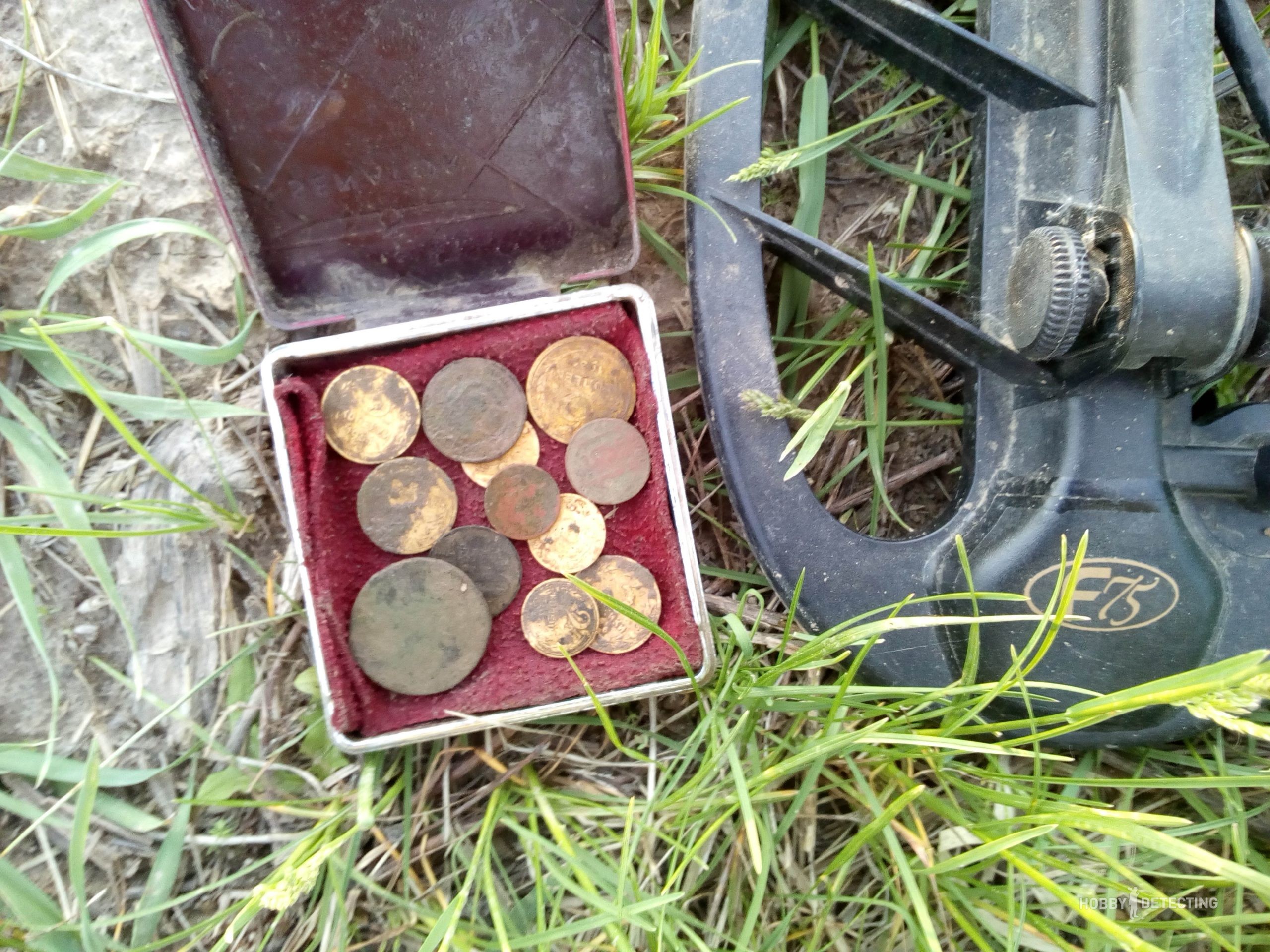
I think it’s not worth describing in detail, details and nuances all the delight that a cop gets from using this metal detector in a plowed village. Coins, coins and more coins. Chernina, even a looped one, is determined by chernina, color signals are well defined even when plowing foundation pits, and sheet iron, when the coil was turned 90%, always began to show that it was iron. There was a minimum amount of digging for false signals, and that was probably because it became boring without real color signals. Among my friends there are many people who are officially part of a search party digging for war. They raise fighters, look for relatives, conduct burials, work with young people and restore old dilapidated obelisks in remote, remote places. So, more than half of the squad members are digging with the Fisher F-75. Why? Yes, because being a war cop means working in very difficult and extremely iron-littered areas and areas. And in such conditions, it is the Fisher F-75 that shows the most stable and clear performance in separating and detecting the desired color signals.
Location No. 5. Summer, a plowed field on the edge of the village.
This summer, our farmer, or correctly speaking, the director of a peasant farm, gave me a good gift. Well, that's what I told him. But in fact, this year a very interesting and very tasty field stood unseeded all summer on the outskirts of our village. Well, not a field, but some kind of holiday. Therefore, there was no particular need to travel far somewhere, look for new interesting places, climb into the forest or dig. Especially shurfitt. Last year, all the interesting places in the area were green with harvest, so I spent more than half the summer mastering the pits. A thankless job in our area. Well, in general, the pit looks good only in videos of top YouTubers.
So I spent almost the entire summer nursing and meticulously combing this very field. As I wrote above, Black performed very poorly and continued to perform in large open spaces. I carried out several more test runs trying to check the device for working on arable land. I tried the PF mode (over a plowed field). And nothing. Maybe I didn’t understand this mode, maybe it’s just a marketing ploy. But I was unable to note any increase in the number of real finds. In general, I visited Black several times and decided not to waste any more time. Then he worked this field with his beloved F-70. However, it so happened that a good friend of mine came to his dacha on vacation; I got him started on instrument searching last year, so immediately upon arrival he came to see me and unobtrusively asked me to give him the instrument for a week. Well, what can I do, I don’t feel sorry for me, because now I have two of them. I couldn’t give a friend something that wasn’t mine, so I stayed with the Fisher F-75 Black for a week. So I want it, I don’t want it, but I had to study the device. And then, on the third day, I suddenly realized how wrong I was in writing off the device in relation to the field cop.

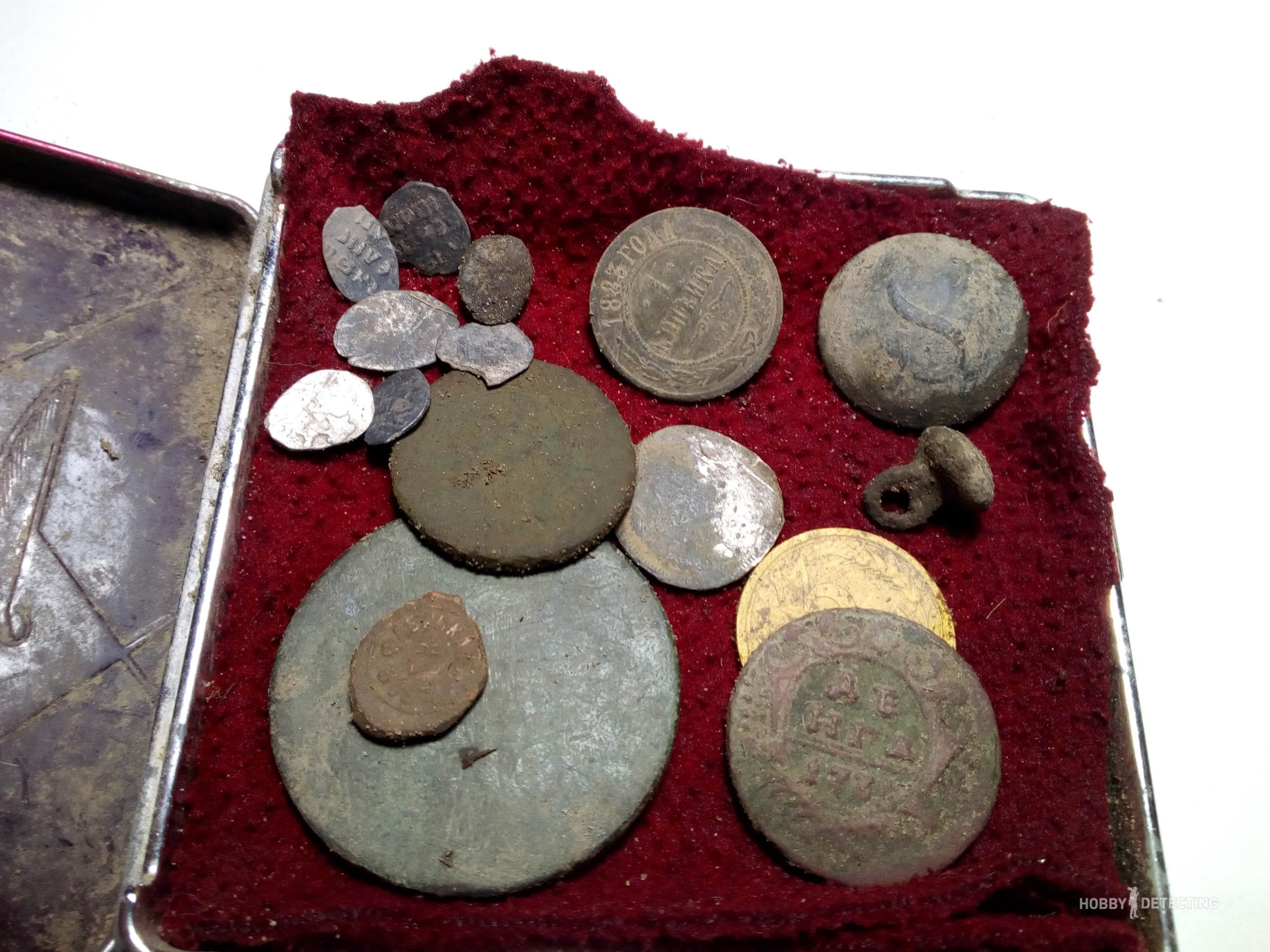
Usually in that field I found five or six finds in three or four hours. Coins, crosses, scales, rings and even a gold wedding ring. But with Black, you could go out all evening and find just one useful find. And something, what exactly, told me in my inner voice that perhaps I was doing something wrong? And then I tried to change the quality of the wiring with the device. The fact is that the F-70 has a Nel Tornado coil, so I swing the device one step at a time. To the right on the right foot, to the left on the left foot. It works fine and is easy to swing a heavy reel. But the Black had an 11-inch rod, and then I tried to move the coil full stroke per foot step. To the right – one-two, to the left – one-two. And then a miracle happened. The number of real finds doubled, the search began to make logical sense, and the swag bin began to be filled with very interesting finds. And the most interesting thing is that most of these finds themselves were smaller than standard coins. First of all, it was scales, then small children's crosses, all kinds of debris and the ubiquitous capsules. No, the overall detection depth with this type of wiring by the device did not decrease, but the MD actually began to remove from the ground what other devices cannot see. Over the course of several days of digging, there were numerous cases when I picked up scales or a child’s cross from the trail of competitors who had previously walked across this field.
Location No. 6. Autumn, forest, silence.
Without a doubt, the biggest and most significant discovery for me in the past season was the understanding of the forest cop. And this happened, first of all, thanks to the Fisher F-75 Black. The understanding of a forest cop was not given to me during the previous three seasons. The main reason for this was the lack of a positive result, the very result that energizes any digger to overcome certain difficulties and receive positive emotions from the implementation of his plans. And a significant part of the fact that this year I managed to reveal my love for a cop in the forest was the understanding of exactly how to swing Black to get the maximum result. This same wiring turned out to be simply mega productive for a cop in the forest. Yes, in a plowed field you can find twice as many coins in the same time as in a forest. But the quantity here is more than offset by the quality. When you pick up a relief, unworn coin in a perfect emerald patina from the forest sandy soil. At this very moment you realize that this coin is several times better than a dozen field poops. Where the denomination of a coin can often be guessed only by the size of the copper circle.

I had the opportunity to test the performance of the F-75 Black in some locations in relation to other brands of MD. The results are still superficial and cannot be accepted as a pattern, but these same data make me very happy. Even compared to the standard F-75, the F-75 Black produced more effective results in terms of the number of finds. So in this case, the pattern that a more expensive device gives better results has been proven and elevated to the level of an axiom.
Let me summarize my review. The F-75 Black is a decent professional-level metal detector, which today can be purchased at the price of semi-professional devices. If you are a big fan of the Fisher brand, or you are the owner of a more budget-friendly metal detector, if you want to buy something more powerful and more effective for detecting antiquities, then I, without any doubt, highly recommend purchasing this device. If you can understand it, if you can master it, then instrumental search will open up new possibilities for you. And if you've become a big fan of forestry digging or are just looking to get into this field, then you can be sure that the F-75 Black is exactly what you need to discover good, clean and scoring finds in those places where you will have a clear advantage.
